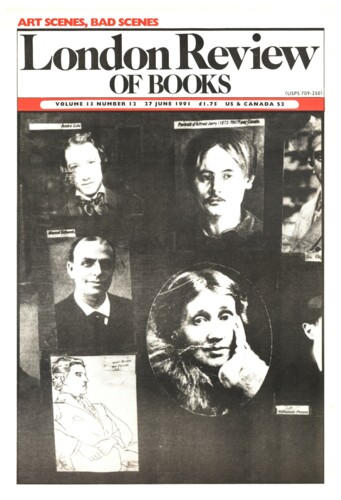Some of Lawrence’s earliest paintings are self-portraits in the mould of Courbet – the painter as Artist. Latterly the role was deepened in its tragic aspect, the artist as Marsyas flayed. Lawrence’s gift to us, his perennial celebration of substance, richness, colour, the great blossoming of form – to use one of his own phrases – all in the name of painting, was never unattached from a sense of mortality. He had looked at death several times. His torrential energy was matched by his stoicism. When he talked about painters and painting, it was always to ruminate about a life story, the meaning of a journey, a journey in which he had a personal stake. His writing was above all imaginative, and even when it was at its most scholarly one had the feeling of being swept along in a creation of the imagination, as in a great novel. It was not a narrative of events he told, but rather a rehearsal of how his subjects had told themselves the greater narrative of painting. Lawrence talked about the art of the past as one reliving a family romance that stretched back centuries and whose unknown dénouement was anticipated with an excitement that was almost unbearable. As in any family epic, there were times when it seemed that identities became almost interchangeable: Vermeer becoming Bill Coldstream – or perhaps it was the other way round – Constable finding room at his elbow for Lawrence’s first teacher Maurice Field. Cézanne, of course, was an ideal father – and an ideal self.
It was the depth and drive of this fantasy that underwrote his lavishness, the extremity of his generosity: for if his allegiance to the family of painters led to a certain tribal generality, it also allowed for its opposite, an extreme celebration of the individual achievement. There are certain words that I will always hear in Lawrence’s voice: ‘unique’, ‘essential’, ‘unparalleled’, ‘indubitable’, ‘indispensable’, ‘extraordinary’. ‘But not every case can be as extraordinary as that,’ I once heard a baffled editor – Karl Miller – exclaim over one of Lawrence’s more ebullient texts. But that was just the point. When one has the courage to see life and death inscribed in every artist’s quest, including one’s own, distinction cannot be exaggerated.
In his 1977 essay on the late Cézanne – in my view, one of the finest of all Lawrence’s writings – he twice mentions Cézanne’s identification with Moses. I have wondered whether there was something shared here too, not perhaps with the grandeur of the leader sighting the promised land, but with the earlier Moses, reluctant at his calling, who protests: ‘Lord, but I am slow of speech and of a slow tongue.’ Not least of Lawrence’s victories was his finding of his Aaron within himself. His eloquence carried a force and a sense of wonder and illumination that one will never experience again.
I go back to the grey-brown gloom of the life room at Camberwell just after the war, the model half-asleep, part of the furniture. Lawrence bounces into the room. Suddenly the model is caught up, transported in a romance of eternal return: Danaë, Bathsheba, Victorine Meurent, Thérèse Walter
Send Letters To:
The Editor
London Review of Books,
28 Little Russell Street
London, WC1A 2HN
letters@lrb.co.uk
Please include name, address, and a telephone number.

